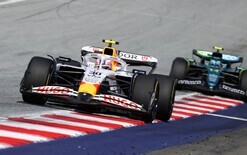Trial for scrappage praised

David Crawford, chief executive, says full details of the “scrap and replace” initiative are absent from the emissions reduction plan (ERP) published on May 16, but these are to be known by the end of this year.
Officially called the “clean car upgrade”, the idea is target middle to low-income families in the transition to low-emissions vehicles (LEVs). In addition, the government is proposing and equity-based car sharing, or lease, scheme.
“The ERP is light on detail on how the scrappage policy will work,” says Crawford, pictured. “It provides for developing the details between now and end of 2023 with a trail scheme beginning late in 2023, probably after the general election.
“The MIA’s views on scrappage are mixed. Our fleet is old with an average age of 14.7 years as at the end of 2021. We support initiatives to take older, less safe and polluting cars out of the fleet.
“Scrappage schemes are usually formulated in countries with new-vehicle manufacturing to stimulate production. Implementing scrappage schemes in countries where manufacturing doesn’t happen can lead to unintended outcomes.
“For a country like New Zealand, designing scrappage schemes is notoriously challenging. Unintended outcomes are usually inflationary at the low end of the market by driving up the price of end-of-life vehicles towards the value of the scrappage incentive.”
The clean car upgrade aims to implement a scheme modelled on one in California, as reported by Autofile last year, in that it targets low to middle-income families.
“We don’t know yet what the boundaries are for middle-income families. Nor do we know if the grant, indicated to be in the order of $10,000, is only for first-time registered vehicles in New Zealand or for any battery EVs or plug-in hybrids that meet certain criteria.”
Generally speaking though, the MIA is concerned at the old average age of our fleet and “would support a well-thought-out scheme that incentivises the trading in an end-of-life vehicle for a much newer one”.
Crawford says: “Without knowing what the criteria is for low to middle income, and what the rules are around the type of vehicle one must buy with the grant, it is difficult to say if the New Zealand scheme will avoid known pitfalls of scrappage schemes.
“We support the need to trial a scheme before it is rolled out on scale. This at least provides an opportunity to assess and modify it to suit New Zealand’s marketplace.”
Light-vehicle fleet
The MIA is unsurprised that the clean car discount and standard will continue to lead the uptake of LEVs.
It adds the ERP states that, in total, $1.2 billion will be provided toward the target of a 30 per cent of the light fleet being zero emissions by 2035.
“As expected in conversations with Michael Wood, the Minister of Transport, in the lead-up to this plan, no end date has been set for the import of vehicles with internal combustion engines, but it could be part of considerations that will occur in 2027.”
From 2024, an extension to the exemption from road-user charges (RUC) is to be considered for light EVs.
However, public transport, cycling and pedestrian initiatives are – “ambitiously” in Crawford’s view – forecast to reduce kilometres travelled by light vehicles by 20 per cent nationally.
“Unfortunately, the plan appears to be silent on the role motorcycles and scooters can play. We are surprised by this omission.”
Heavy-vehicle sector
Crawford notes James Shaw, Minister of Climate Change, focused on light-EV uptake, shifts in transport modes and other energy contributors in his presentation on the ERP on May 16 – with these areas “outstripping” heavy transport.
“This is reflected in the ERP with the bulk of the emissions reduction from heavy transport and freight being targeted for the third emissions budget period in 2031-35,” he explains.
“The heavy-vehicle sector is given significantly more time. This is something the MIA argued for with legislation progressing slower to match.”
By the end of 2022, funding will be available to support the freight sector in purchasing of zero and low-emissions trucks.
“Hydrogen is mentioned here alongside electrification and low-carbon liquid fuels,” says Crawford. “Total emissions from freight are ambitiously targeted to reduce 35 per cent by 2035.
“From 2025, all new buses must be zero emissions and, by 2035 all public transport must be zero emissions.
“Options for extending RUC exemptions beyond heavy EVs to other fuel types, and for regulation on heavy-vehicle imports to cut emissions, are to be evaluated by 2025.”
Changes for energy
Half of all energy would be from renewable resources by 2035, according to the ERP, although the mechanisms and details to achieve this are still to come in the form of a national energy strategy.
About $650m has been allocated over four years with another $330m over three years post-2026. Some of this will go to the use of alternative fuels, such as hydrogen and biomass.
New coal boilers will be banned and old ones phased out by 2037. To help this, $73m has been set aside to plant 10,000 hectares of forestry for woody biomass and $638m to co-fund coal conversions.
Money is also going into production of native seedlings, $145m for other forest planting and $111m for improving carbon stored in natural ecosystems.
“The Climate Change Commission’s suggested end-date for new gas connections has not been included with Minister Megan Woods saying the pipelines could be used to carry renewable gas instead.”
Agriculture policies
“The government has not adopted the Climate Change Commission’s proposal to cut herd numbers by 15 per cent,” remarks Crawford.
However, decisions on emissions cuts will come later this year after the government has negotiated with the industry on the pricing system to be proposed by He Waka Eke Noa – the Primary Sector Climate Action Partnership.
The ERP includes $710m in funding for agriculture over four years. Some of this will help develop “green fuels”. The plan expects a 0.3 to 3.7 megatonne of CO2-equivalent reduction by 2025 by when the sector will come under the emissions trading scheme (ETS).
Then there’s $339m in top-up funding for research into farm emissions-cutting technology, such as methane-reducing food additives and low-emissions fertilisers. Pilot farm-level accounting and emissions reporting is due by 2023.
The ERP’s top line
The MIA notes $4.5 billion of ETS revenue has established the Climate Emergency Response Fund. This will be used to help New Zealand reach target net-zero greenhouse gas emissions by 2050. The fund will initially have $2.9b over four years.
Crawford comments: “The government appears committed to using new policy in conjunction with the ETS. Its top-level modelling suggests price signals from the ETS will directly account for just one-third of total emissions reduction in this budget with the rest coming from ERP-related policy changes.
“In-line with this, the government has indicated it will adjust ETS settings to ‘balance’ gross and net-emissions reductions.”





